
Saturday Architecture
By Tiny Magiq

Saturday ArchitectureApr 20, 2024

Unlock Part 2: Unraveling Gen AI: Who's Really in Driving? SA 78
In this vibrant session of "Saturday Architecture," our host Kumaran, with guest Deepak from Microsoft, dives into the nuanced world of Gen AI. As part two of the "Letting Out the Genie" series, they tackle the complex interactions between different types of Gen AI users and what it truly takes to harness the technology's potential. Kumaran and Deepak as they dissect the roles of users within the Gen AI framework! From casual users to builders, find out who truly drives the innovation in this engaging discussion.

Unlock Part 1 - "The Mysterious Case of the Underutilized Genie: Gen AI" SA-76
"Join us in uncovering the mystery of the underutilized Gen AI! Dive into a conversation full of intrigue, laughter, and a quest for understanding. Why is Gen AI still waiting in the wings when it could be center stage solving our biggest business puzzles? 🧩🤖 #TechMysteries #GenAIUnleashed" And there you have it, a lively exploration of Gen AI's puzzling underuse, packaged with humor, mystery, and a call to action. Let's not just admire the Genie's bottle; it's time to let the magic out!

"The Architects' Dilemma: To Do or Not To Do?" SA-75
Welcome to a rib-tickling episode of Saturday Architecture with Kumaran, Raja, and Deepak! 🏛️😂 In this session, we delve into the often-overlooked pitfalls of overengineering and the importance of simplicity in design. Buckle up for a journey through the "don'ts" that might just lead to better "do's" in architecture!

The Value Dilemma: Creating vs Realizing Value SA-74
Kumaran and Deepak discuss the challenges tech companies face in delivering value to customers. They explore the difference between creating value and realizing value, highlighting the importance of thinking like an architect and collaborating to execute a framework for value realization. They also address the skill sets needed for creating and realizing value and the limitations of focusing solely on technology. The discussion concludes with a call to action to explore the path forward for making value happen.

AI: The Imperfect Odyssey SA- 73
Kumaran kicks things off with a revelation that his two decades of experience is about as useful for AI as a chocolate teapot is for brewing tea. It's like a fish trying to climb a tree - utterly out of its element! Deepak, not to be outdone, likens AI to a weather forecast - unpredictable, often wrong, but we still check it every day. He suggests that architects are trying to read the AI book in the dark, fumbling around for the light switch of understanding.
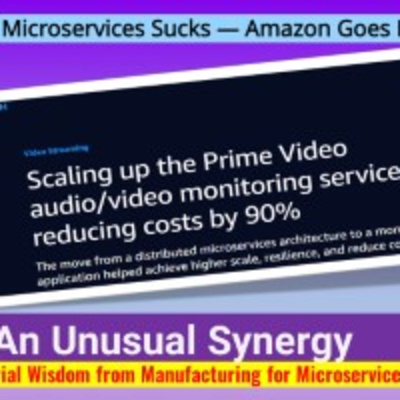
Industrial Wisdom from Manufacturing for Microservices: An Unusual Synergy SA- 72
The discussion explores Prime Video's successful shift from a microservice-based system to a monolithic architecture, leading to significant cost reductions. The speakers propose learning from manufacturing and industrial engineering to optimize software architectures. Concepts like work-study and value stream mapping could be invaluable tools in enhancing efficiency and identifying potential pitfalls in software design.
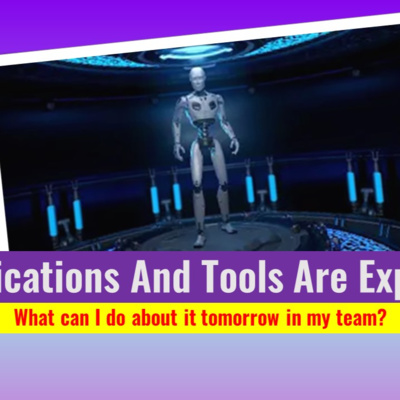
What do I with AI immediately in my team ?- SA- 71
Are you tired of doing all the work yourself? Want to sit back and let a robot do it for you? Well, you're in luck! In this article, we'll explore how to use AI to become the ultimate lazy person. Just kidding, we'll also discuss its benefits for productivity and innovation. Artificial intelligence and its tools and applications have really taken off in the past 6 months. To be exact the ability to use AI has come closer to the normal person beyond data scientists. When I see the normal person I mean architects, project managers, developers, operation leads, etc. So this episode is about what are the use cases of some of the leaders that we have decided to implement in the coming 2 to 3 months.
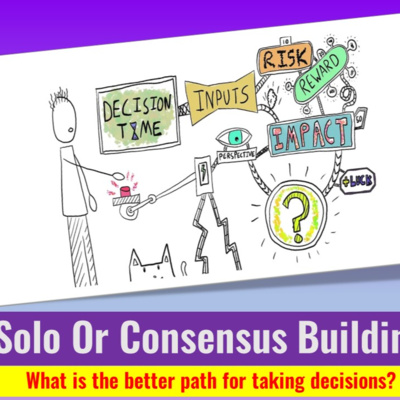
Architect as a Decision Maker: To Solo or To Consensus Build?- SA- 70
Solo vs. Consensus Decision Making: The discussion starts with the debate on whether architects should be solo decision makers or consensus builders. Experience is Key: The speaker shares their experience with a new program manager who changed the deployment schedule and how it unexpectedly led to increased productivity. To Solo or Not to Solo: The speaker points out that the decision to go solo or seek consensus depends on the size and context of the decision and the experience of the decision maker. A Dilemma Wrapped in a Mystery: The speaker ultimately concludes that leaders should make conscious decisions with the help of their team, taking ownership of the outcome, whether it's a success or a failure. It's not a "romantic idea of leadership," but a basic quality of a team leader. Or, as they put it, "It's not something extraordinary, just the basic quality of a team leader...unless you're leading a group of ghosts, then it's a different story."
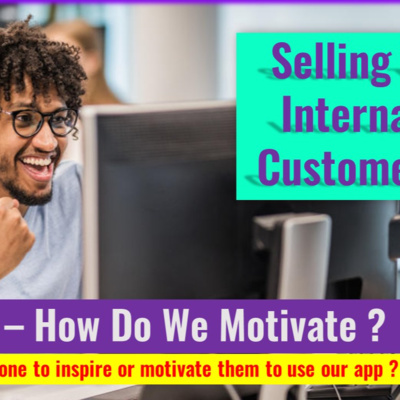
How do we motivate or inspire them to use it? - Part 4 of 4 Part Series SA- 69
To motivate users to adopt and use applications, it is important to make the application solve their day-to-day issues or their job, empower them to solve their own problems and involve them in the process of generating and visualizing the idea for the application. Change management and adoption building should begin at the beginning of the development process. It may be challenging to motivate experienced senior executives, but building a sense of community and creating incentives can be effective strategies.
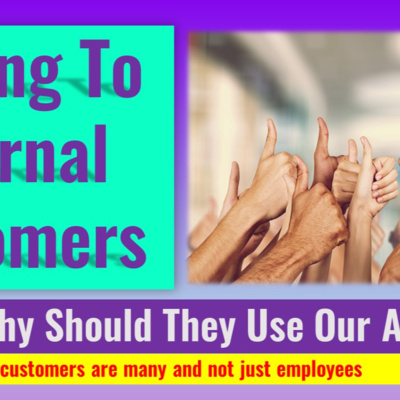
Why Should They Use Our App/Feature? - Part 3 of 4 Part Series SA- 68
One of the key challenges, let's assume we develop an application and it is done. The key question is why should the internal users actually use it. Only if that question is answered in their minds very clearly, they're going to use the application. To inspire users to use it the following are some interesting insights
varadharajan srinivasan says - For me to explain the problem, I have to be in the right context of explaining the problem that they see as a problem. ? Are you in the right context of understanding the problem?
Deepak Sharma says- If you are able to connect to the scenario of the end user, the context. "Walking the Gemba" from lean, which is you are in the situation with that user and experiencing what they are actually experiencing in the day-to-day. Explain the developed feature contributes to the solution of that scenario only then the solution would make sense to them.
Sidambara Raja Krishnaraj says - To get the scenario right two popular tools help immensely. One is "Jobs to be done" and the other is "Value stream mapping". Also eliciting the "what is in it for me" for the user we're trying to provide. Using cocreating with the users to build a vision for the future for the solution and upcoming features. Prepare them well ahead before release.
Kumaran Anandan says- The insights shared by leader Nagaraja Srivatsan in how a Wall Street Journal article on adopting AI in retail and its relevance in healthcare and AI. Appeal to the user's identity and purpose as a person Every individual wants to be a better version of themselves. So this person sitting as a data entry person, you'd say you can be a much kinder, nice, caring person by making sure that you enter the data correctly. Because if you enter the data wrong, somebody's health will be affected. Convey to them - "You are a protector of somebody's health. Now to protect that person. This feature will help you." Finally, the context is about the user and not the feature.

Who exactly is the customer? - 2 of 4 Part Series SA- 67
Are we dealing with the right customer?
There are two types of customers we deal with from an IT perspective. First, there is a direct customer which can be the HR department or the finance department, then there is the indirect customer of the HR department and the finance department which could be the employees who are the external vendors.
The customers could also be classified into 3 broad categories: Providers, Consumers, and Aggregators. The Providers are teams that provide services like network, storage, data center operators, etc. The Consumers are departments like HR, finance, etc. The Aggregators are developers who actually make the application.
The regulators are good examples of these types: security team, procurement team etcetera
But they're not all created equal! A good example of this is when you're looking at a "Sponsor" type persona; a sponsor is a person who can state what is the business value of using this application and its relevance to organizational success.

Internal customers are tough - 1 of 4 Part Series SA- 66
I have developed an application for my corporate users, basically internal employees. This was done with a lot of sincerity, business study, and getting buy-in from them. but after the system goes live no one seems to be interested in using the application however hard I try, which is very baffling and irrational. After all, I made this application based on the end users request and did a study with them.
Why will they not use it?
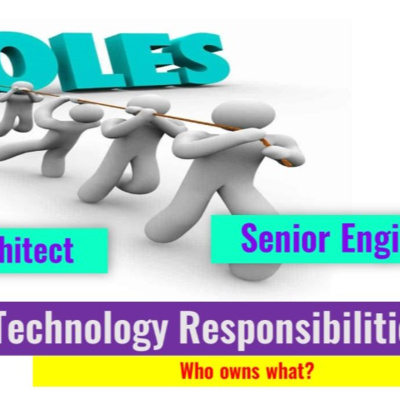
Whose neck should be on the line? SA-65
Who is responsible for the ultimate success of a business aka Revenue/Profits? This becomes an even tougher question in today's world when everything is driven by technology. For a technology company, this becomes even more critical.

Does the architect's job change in a hybrid scenario? SA-64
The architect and the architecture team will have different responsibilities in a remote working environment. \
One of the most confusing aspects of hybrid working environments is that there are no formalized guidelines to set standards. That means that every team will be different.
When it comes to architecture and development teams working in hybrid environments, there tends to be a split of opinions. Some say you should continue on the same path you had before and others believe the best way forward is to change things up a bit.
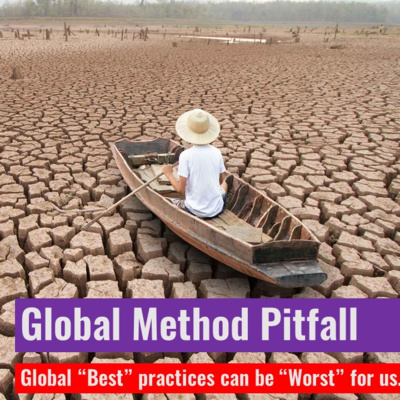
Local Vs Global Best Practices SA-63
Dont follow Global "Best Practices".
Are Global Best Practices Bad?
The answer is yes, and no.
It depends on what you mean by “global best practices” and how you use them. If you're looking for a way to implement a global concept or process in your organization, then the answer is probably not: global best practices can be a dangerous distraction from actually innovating and building your own local practice. But if you're just looking for ideas that have worked elsewhere, then they can be very helpful!
We will be discussing this topic with Deepak, who has worked in both Asia and America. He's also an expert on cultural differences between Asian countries as well as between American companies. In this conversation, we'll look at some of the different ways that we can use global practices effectively in our own organizations—and how we might need to change them when they don't work as well in our context.
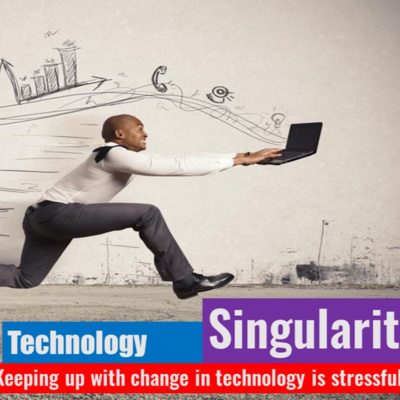
Keeping up with technology change. SA - 62
With technologies changing and new technologies getting introduced, how to keep pace and stay relevant?
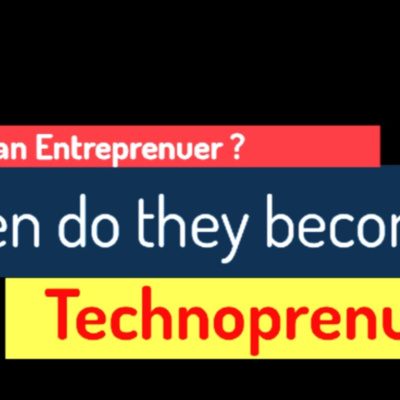
Does an Entrepreneur qualify as a Technopreneur ? SA - 61
Is anyone who runs a business an entrepreneur?
What does entrepreneurship inside a corporate company?
What makes an entrepreneurand a technopreneur ?
Is a successful architect an technopreneur or do they have to do something more to qualify?

Technopreneur - Who? SA-60
Most of the technical organizations today have a simple problem how do we deliver value to the end customer using technology in the cheapest and quickest possible method. The software industry is at a stage where we have become fairly good at delivering any requirements explicitly stated however to discover requirements that are not explicitly stated we have struggled with it for more than 3 decades. I keep hearing this when I talk to senior technology experts. we don't have domain expertise what can we do? We know only technology hence we cannot drive the customer's business. "We deliver what the customer ask to deliver" There are certain methods that can be learned and certain mindsets which can be developed with practice do help one become a Technopreneur. Technopreneur is precisely a person who can actually go to the customer, tell them this is your hidden/unstated need, that you did not know you wanted. Then deliver it in the cheapest and the shortest time possible causing delight. In this episode of Saturday Architecture, we discuss some of

What is the waste kept safely? SA-59
This week we had a festival called Bhoghi in southern part of India. an important ritual as a part of this festival is to collect the waste from your house and burn it. it is an interesting ritual as we identify things which are hampering our quality of life and removing them and making a clean start.
As I was thinking about this it occurred to me from years ago when I had learned about lean manufacturing while reading the book “Toyota Way” it talks about 7 types of waste
1. Transportation
2. Inventory
3. Motion
4. Waiting
5. Overprocessing
6. Overproduction
7. Defects
This set me thinking as an architect -
“What are the wastes I could remove from the systems which I am responsible for as an architect?”
“removing an emerged guitar branches” , “unused reports and unnecessary data jobs running in production“, many more…

Great Resignation - Architect's role ? SA-58
Great Resignation
Can architects stem the flow? Yes seems to be resounding in answer
A few pointers
• Making the CEO or the CTO look good
• Providing a technology vision helps
• Ensuring impact of the team’s work
• Making architecture look sexy
#greatresignation #architects

Log4J - Not your problem? SA-57
#log4jvulnerability has created havoc. I escaped this time but note sure about next time.
Something like is "INEVITABLE" unless I am god.
Thankfully there are some things that can be done. Listen to some good insights from Deepak Sharma Nithin Mathew Sivaprasad Tenkala Jiffin Akkarappatty
Full Video here : https://lnkd.in/gQTRju-n
A good explanation of Log4J for those interested is available here. https://lnkd.in/gVrXu3kD
#resilient #architecturedesign

Resilient Architecture - Whose problem, is it anyway? SA-56
The architecture will fail. Solutions will fail. How to handle them cleanly.
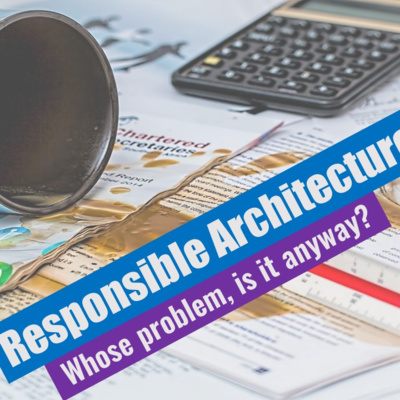
SA-55 : Responsible Architecture - Whose problem, is it anyway?
As an architect, I used to think/say
- I have very little time to develop, so.....
- have very poorly skilled team members, so...
- The requirements are not clear and keep changing, so...
How can it be my responsibility alone to develop a good architecture? Some challenges insights.

SA-54 Developing applications for unknown customers?
For new business solutions, when the customers are unknown.
In this scenario how to develop applications to meet unknown expectations?
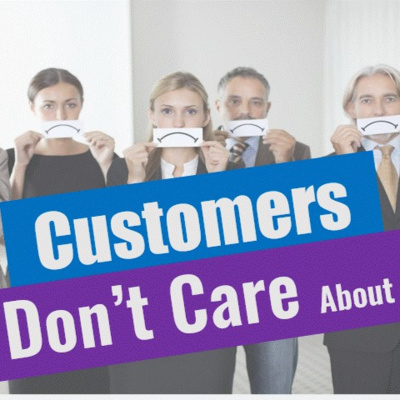
SA-53 Customers I DONT care about?
SatArch Ep- 53 :
After 28 years I realized there are many customers who I DONT care about?
Deepak - Someone who pays is the customer they are not end-users
Venkat - The development team is also customers. Why do we need to think like this?
Nishanth - The end users are only high-value customers. Giving the right value to customers. What is the right value?
Kumaran - The operations teams are the most ignored, customers. They are most resistant, but why?

SatArch Ep- 52: What is Customer Experience?
What is #customerexperience (CX)? It is a big intangible. Interesting insights in less than 3 minutes
Deepak Sharma- The difference between CX, UX, and UI
Sidambara Raja Krishnaraj – Using job theory and Co-creation as a CX levers
Venkatesan Oosur Vinayagam - Managing changing needs is CX
Nishanth K Pillai - Making a promise and keeping it
Venkataraman Subramanian you passion.

Ep- 51 : New Technology Adoption - Architect's Responsibility?
Some questions
- Is the architect responsible for the adoption of new technologies by the end-users ?
- Or does the architect responsibility ends with choosing the right technology and implementing it well?
This is not an easy question to answer. It depends on the context and the scope of the architect's responsibility also. Let us look deeper into what are the other parameters which determine what the responsibility of the architect is with respect to new technology adoption either by the technical team or by the business.

Ep- 50 : Architecture - Difference across Geos and Domains.
Does an architect in the US and India mean the same when they tell something? - No
Does being an architect in one Business Domain mean the same as an architect in another Business Domain? - Most probably not.
Venkataraman Subramanian who has worked across Geos and Domain shares some interesting insights.
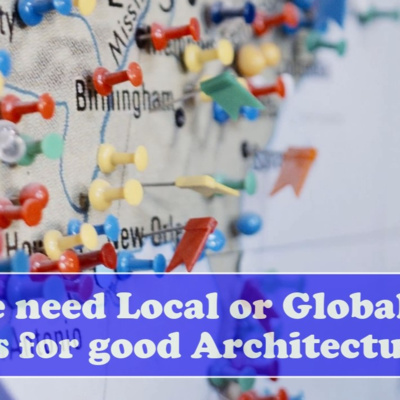
Ep- 49: Should I stay local or follow global practices?
"That concept will not work in my organization we are different" - Sr Mgrs
"I need that Global standard to be implemented right away" - Sr Exec
So should we develop solution locally or go for global ones? Most of time global solution will fail because of many factors..mostly it is cultural (human) issues. Does that mean I have to reinvent the wheel every time? Getting hit by NIH syndrome.
Some interesting insight on handling this conundrum?

Ep- 48: An architecture which manages or influences?
Does your architecture influence or just manage?
We typically have architectures that manage the user requirements. It is hard to make an architecture influence and change the user's life. This includes changing their behavior. This is a big challenge, especially in Enterprises.
How do we make architectures which can influence?
An #architecture that drives #changemanagement , the most needed attribute for #digitaltranformation

Ep-47: Using Architecture principles to deal with Covid Infection
Kumaran shares his experience of how he and his family applied architecture principles when Covid infection happened to all his family

Ep-46: Spotting Architecture deficienies
It is easy to spot bugs in code/design. But bugs/deficiencies in architecture get away 90% of time. Don't believe me. Listen in
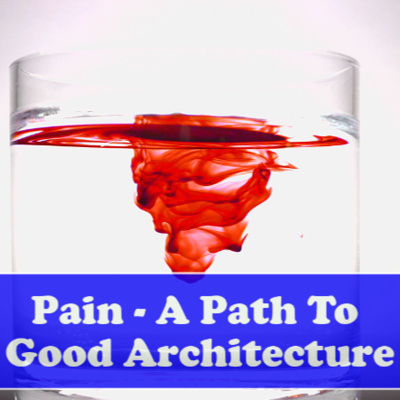
Ep-45: Using Pain - A Path To Good Architecture
Beyond user requirements using pain as a path to make good architecture sounds interesting. But it is not easy as it sounds.
Check out insights from
Raja - Symptomatic treatments, Google Doctors
Gowtham - Business pain / Developer Pain / Change management pain
Prashanth Kaankade - We have a car but don't know how to drive it. Covid is a "pain enhancer"
Deepak - "Being a good doctor" is the skill architects need to have. Grow beyond a chemist ( technology expert) as my manager Harish used to say.
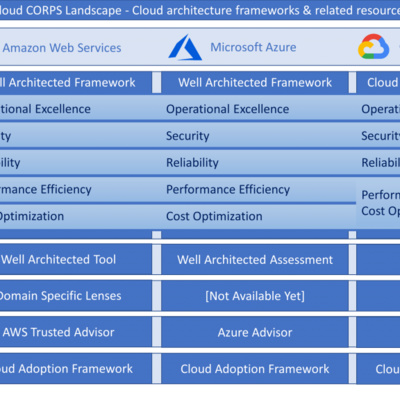
Ep - 43: CORPS - 5 Pillars of cloud architecture
SHOW LESSCloud technologies do not give CORPS by default.
A hacker can use your cloud instance to run up your cloud bill.
Architects cannot reduce architectural responsibilities just because the cloud is used.
An architect needs to be even more cautious on the cloud than on-prem.CORPS will apply to all phases of software development not just when doing design. It is a cultural thing.
Use existing CORPS tools from the cloud providers.
More details about CORPS here : https://thenewstack.io/introducing-co...

Ep-44: Microproducts - An Alternate Architectural Approach
Mircroproducts is an interesting paradigm introduced to me by the awesome @Dorai Dodla Kumaran - Current way of thinking is not ideally suited for Mircoproduct architecture Gaurav - Observability helps in Microproduct mindset Nirosh - Nature has Microproduct architecture elements and the relevance of Quantum Computing.Observability is more important than traceability Venkat - Using the pain as a purpose for designing a Microproduct

Ep 42: Hot swapping architecture components
There is a need to change software and architecture in production. This cannot be done by bringing down production systems for every range.
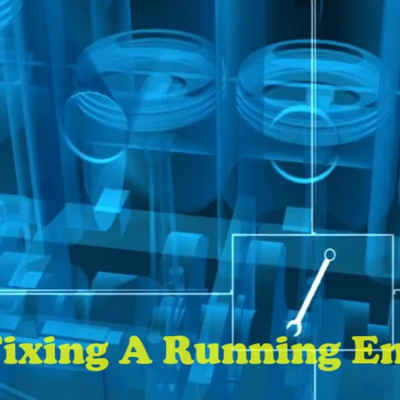
Ep - 41 : Fixing A Running Engine
Fixing issues in production is a tough challenge with no/very less debugging options.
How do you handle this? Listen to me and Deepak sharing our experiences
Deepak shares a Telemetry story and its origins
2 bonus stories- A condom tester that failed / Hubble Telescope did not work on the launch.

Ep 40: Architecture Resolutions for 2021
As an architect, the resolutions are an architect and commitment to architecture.

Ep 39: Locode NoCode - Road ahead
Low Code - No Code is a great opportunity to accelerate businesses and reduce the waiting time for software development . Full Video here Venkatarangan Thirumalai- Too many moving parts and too much demand. 1. Lo-No Code with 15% growth on IT spend. 2. 28,000 jobs posting on Power Apps on Naukri / Upwork Deepak Sharma- Development configuration of the No-Lo Code governance needs to thought about. Venkat - Empower the employee. Shares a beautiful case study of TMobile Similar to Excel sprawl - Locode Sprawl - What can we do about it? Venkat - Use of market place within the enterprise and outside. Analogous to Intelligent Ideas by Powerpoint we need #nocodelowcode tools to evolve. Also gives an analogy of Excel services. IT should focus on Data + API Nishanth K Pillai The path to #empowerment of business users? IT should spend time to build capability. #citizendeveloper is the person who #architecture support. #blessedbeyondmeasure Jiffin Akkarappatty End users are asking for more configuration capability and building templates that can be configured and composed. IT jobs will NOT be eliminated. Give more respect to end user's learning capabilities. #digitalbusinesstransformation #growth

Ep 38: Ready To Eat Architecture
Ready To Eat / Ready Mix food products help reduce #technicaldebt. Deepak Sharma: It is not a build or buy decision anymore, a hybrid decision model needs to be evolved Making the backend more open and flexible. Making microwaves, a stove accessible. Look at the user base to decide Venkatesan Oosur Vinayagam: In startup take caution against eating junk food. IT should identify good tools for #citizendeveloper. Make a menu or catalog of self-service tech components like UIPath / Power Automate Nagarajan Ramanadhan- In the enterprise there are challenges. Custom self-development for business users. The challenges faced with the approach. What is behavioral driven development? #agilemethodology is needed for this to work level. IT needs to play the role of L&D continuously. He shares his success secrets in a large financial organization. Citizen developer for more than 10 years. Nishanth K Pillai- The business airline users want the power to do it themselves. Please empower ourselves. We are changing the mindset to let us give full power to business users.

Ep 37 : How do you architect for scale-out?
Typically scale out means only from a technical perspective. Here we take a look at it from business and other perspectives as well.

Ep 36: Customer Journey Vs Process maps
The relevance of the customer journey 06:03 Deepak - A key step is the addition of customer experience. What is the value being delivered? 09:23 Gowtham - Challenges in meeting the business the process takes precedence over the customer journey experience 14:55 Venkat - Challenges in making the customer journey. Processes make it easy. 17:32 Gaurav - Process is a de-risking method. Instead of design thinking doing event storming Capture metadata for each step in the customer journey. Event storming is a concept which can be applied. Relation to microservices. https://www.lucidchart.com/blog/ddd-event-storming 34:27 Gaurav - Elimination of events helps enhance customer experience Retiring business events. Political/economic impact of retiring event 39:20 Deepak - Example for event elimination 40:12 Gaurav - Elimination of events leads to a better event more relevant a great example Better

Ep 35: Navigating the maze of Multicloud.
Sanjay Narang a leading Cloud expert joins us to explain. Multicloud - Why does it matter as a consumer? As a CTO of a startup, it impacts me. For a larger enterprise, it most definitely does and is unavoidable. 04:30 - What are challenges faced by my enterprise? - Sanjay It helps in reducing cost. Reducing cost by reducing consumption. 10:40 Gowtham - Negotiating with a cloud vendor is tough because more discount happens with a large deal. Is multi-cloud really necessary? 15:45 - Sanjay - How do we backup/migrate an app from one cloud to another cloud provider? What should be aware of? 17:50 - Venkat - Challenges faced by a startup in using multi-cloud providers. 20:05 Nishanth - As an application provider hosting a custom application impact on multi-cloud what would he be worried about? Time to market is a key factor for a Saas provider. Have 3 broad scenario - Power BI for Reports ( Vendor-specific capability ) GitHub / Azure DevOps ( nearly equivalent cloud providers available ) Infrastructure VMs - ( Vendor agnostic capability ) 26:48 Deepak - How to prepare for a multi-cloud approach as an architect? 32:48 Sanjay - Setting a constraint that my application needs to be portable can hamper business agility. Why is that not a great idea? By doing this we lose the ability to leverage innovation happening in the world 43:26 Kumaran: Demonstrates a cloud-specific innovation. If portability is taken too seriously then we will lose out on innovation. 45:55 Sidamma: Challenges of multi-cloud. Share her experience of Aviatrics multi-cloud management 48:40 Deepak - Scattershot approach to architecture to multi-cloud. 49:45 Sanjay - 90+ providers for multi-cloud, so it is hard to choose what will work for you.

Ep 34: No more Gyan(just knowledge) with Gaurav
This lot of knowledge/blogs/technical articles out there. But a "how-to" handle my real-life problems is a scarce resource. Gaurav Aggarwal shares a lot of wisdom in this long episode of applying architecture concepts to challenges we face as architects. His "no-nonsense" and "no-fluff" answers were extremely insightful, inspiring and last but not the lease implementable. 01:00 Why certifications low in large enterprises? how to accelerate your organization as Cxo / VP? 03:00 CTOs are hands-on nowadays 04:30 Difference in the interaction between CTOs and CIOs? 05:10 Old way of learning vs new way of learning for cloud-based - what how to learn? 08:30 - Do Digital buzzword generates new business? 10:00 - Never do POCs, do Proof Of Architecture POAs get a million dollar deal 14:00 Architects beyond business knowledge should also learn marketing. 17:00 What to do when 80% It Budget is spent on lights-on for driving Digital Transformation? 19:45 Change in IT customer needs post-Covid 21:30 When doing legacy transformation, how to show value to business? 25:00 How can an Enterprise architect unlocking value and increase revenue in weeks and not months? 28:00 Does enterprise architecture still valuable in today's fast-changing world? 31:30 Too much strategy time and money spent without seeing value for end-users in short time 39:00 What is financial engineering for architects? Why is that a necessity today? How to become a good financial engineer? 44:00 Is in-sourcing the trend for large organizations? If yes will it kill the services business? What can we do? 51:00 How and when does a Buzzword convert to necessity? - Gowtham 54:30 How is the architect helping the business grow? - Jiffin Can you reduce the cost of sales? 59:00 How to make change management easier which will drive sales? Is someone spends is same for 2 years 1:04:00 What is Finops in an IT organization 1:07:00 Multi-Cloud makes financial engineering tougher. How to handle it - Sidamma 1:19:00 With technologies changing so fast, How I can handle an interview which wants a completely new technology that I have not worked on at all? I don't have time to master it for getting a new role or job. 01:25:00 With so many choices how do I choose the appropriate technology or Platform for my solution?

Ep 33: Consistency - An orphaned child in Architecture family
Consistency is a key attribute needed for architecture. But that hardly gets focus. Kumaran - Consistency is hard in architecture. What does it mean? Why is it needed https://youtu.be/TmA7vBowCRU?t=40 Deepak - Shares insight to spot the architectural issue happening and consistency missing like a GPS https://youtu.be/TmA7vBowCRU?t=378 Nishan - is it true that consistency matters? https://youtu.be/TmA7vBowCRU?t=660 Venkat - Focus on one area to build consistency for building people team https://youtu.be/TmA7vBowCRU?t=845 ** How to build consistency ** Nishan - Involve the business in architecture reviews. Helps cross domain knowedge https://youtu.be/TmA7vBowCRU?t=660 Venkat - Focus on one area to build consistency for building people team https://youtu.be/TmA7vBowCRU?t=2550 Deepak - Meet regularly helps. Shares his personal experience from his life of 20 years. Deal with pitfalls of not happening. Connects to Kirk Patrick Level 4 learning https://youtu.be/TmA7vBowCRU?t=2134

Ep 32: RPA- Hyper-Automation And Architects
Kumaran - Automation / Robotic Process Automation is not considered a key asset/tool in the technology architect's box today. There is still a need to go to application/programming languages. How important is the automation tools of UIPath/Automation Anywhere/Power Automate matter? https://www.youtube.com/watch?v=6n3OxYDd6Ls
What does automation mean? Karthick - Automation is more for delivering better quality than cost reduction. Tools Level 1 call - Jenkins / Python. Level 2 - Webmethod / Mulesoft https://youtu.be/6n3OxYDd6Ls?t=204
Venkat - Automation to improve reduce human for testing. Figuring out what to automate is hard (the devil is in the details). For ETL - Apache Airflow / Shells / Jenkins https://youtu.be/6n3OxYDd6Ls?t=805
Deepak - Automation depends on the domain/context-specific. Draws a difference between "Citizen automation" and "non-citizen automation" tools. Now non-programmers can also automate. It is worth your while in doing automation? Can "no-code" automation like AA/UIPath/Power Automate replace programming? Because it is difficult to evaluate all use case we take a longer time to put specifications in place. Or use a workaround, to begin with, but consider that no-code as a first-class citizen. https://youtu.be/6n3OxYDd6Ls?t=1103 What and how to leverage the new technologies? What would be its benefits?
Kathick / Venkat / Deepak - See the upside of adding these to the architect's toolbox. Will be glad to use something like that. Save time. Reduce pain. Worth investigating. We should use no-code which will help in customization as the user needs to change. Reduces the Time To market. When using "no-code" automation drastically helps justify a business case. Deliver more for less. Gives an interesting warning about "no-code" automation and what to look out for as opportunities. https://youtu.be/6n3OxYDd6Ls?t=1620
Kumaran - Once this is successful, it makes most developers job more redundant. Actually empowers business users. Programmers are not more king of technology hill. What needs to be done? Is it all good not quite, https://youtu.be/6n3OxYDd6Ls?t=2880

Ep 31: A Story telling Architect ?
Kumaran - Give a quick overview of story stelling specifically for architects. Why? How can a story be told in 2-3 mins? Storifying the data https://youtu.be/7ioHnNTE-LM
Deepak - How can you build "What's In it For Me" is the Zeitgeist, the architect needs to leverage storytelling to make that happen. How to tap feeling to make a good story? https://youtu.be/7ioHnNTE-LM?t=323
Nishanth - Share his insights on challenges an architect or a technologist faces when presenting to the audience. How can we talk about EBITA/Profitability to a fresher? https://youtu.be/7ioHnNTE-LM?t=893

Ep 30: Eating an elephant
How to eat an elephant? Large project sputter/stutter and chug along. Mostly along the way they lose steam or interest. In my experience at the end stakeholder ae more relieved than joyful. "Customer Delight" by architects goes out of the window. Is it even possible?
Kumaran: Apply the happy bullocks to reduce the challenge. Avinash connects this to marathon running.https://www.youtube.com/watch?v=kdtaHT2U0IM
Jiffin: Involve more experts and more detailed research about the problem and risk management with other stakeholders https://youtu.be/kdtaHT2U0IM?t=370
Avinash: Correlates it to running and tackling a very old Content management system that needs to be migrated.https://youtu.be/kdtaHT2U0IM?t=570
Deepak: How to handle it in a system which is risk-averse or failure averse, this typical of legacy systems. How resilient is the system? Looking at quality Deepak talks of different types of elephants as well.https://youtu.be/kdtaHT2U0IM?t=962
Venkat: Prepare the stakeholders mentally to handle the elephant. Prempt the issue and handle the repercussion https://youtu.be/kdtaHT2U0IM?t=2630

Ep 29: Process Mgmt and architecture
Aligning the process of product/software development is tightly coupled with the architecture that is being built as well. We will look at how an architect can help the program/project manager customize the process for the architecture being implemented
Venkat talks about inducting new members and handling the challenges in getting them up to speed. Even though the process is "Agile" meeting biz requirements is hard. Also talks about how the business stakeholders and ask for last-minute requirements. The challenges faced in implementing it and aligning architecture to meet business needs https://www.youtube.com/watch?v=0r_cjfHoeIc
Deepak talks about handling the above needs. He talks about aligning architecture needs and requirements with Red/Yellow/Green team members. Making the best use of skills and talent. He also explains how an architect can lead by culture change and not process change. This can happen by accountability setting using quality as deliverable. Also, Deepak gives tips on avoiding a clash with program/project manager Watch this section alone: https://youtu.be/0r_cjfHoeIc?t=1320
Ram Handling Reds - socializing session with business and IT teams - ease-out with personal interactions - avoid day to day interactions - creating opportunities for empathizing, acknowledging their skills
Handling Yellows - identify them clearly - training them - tracking closely Watch this section alone: https://youtu.be/0r_cjfHoeIc?t=1970

Ep 28 Basics of Cobra effect on architecture
Venkatesh , Aquaconnect- Used the Block pattern which caused the Cobra effect? The effect is seen quickly. Moved to provider pattern still the same problem is surfacing.
VIMALesh- Versioning history is turned on OneDrive surfaced the problem. "Double Cobra" effect. Cloud migration also a Cobra effect.
Part 3 Nagarajan Ramanadhan, Virtusa - A particular functionality which happens seasonally. The newer process was introduced to handle this has caused the Cobra Effect.
Nishanth K Pillai IBS - On the impact on the booking system
Deepak Sharma # - Explains his experience of Cobra Effect when doing a large change management program. Agile contributes to Cobra effect inadvertently
Part 4 How Cobra farming is done systematically and unintentionally? The goodness of Cobra effect?
Part 5 Handling the Cobra effect ?Cobra effect helps us be more mindful. Awareness and curiosity is key. #cobraeffect #agilefailure #productivityloss